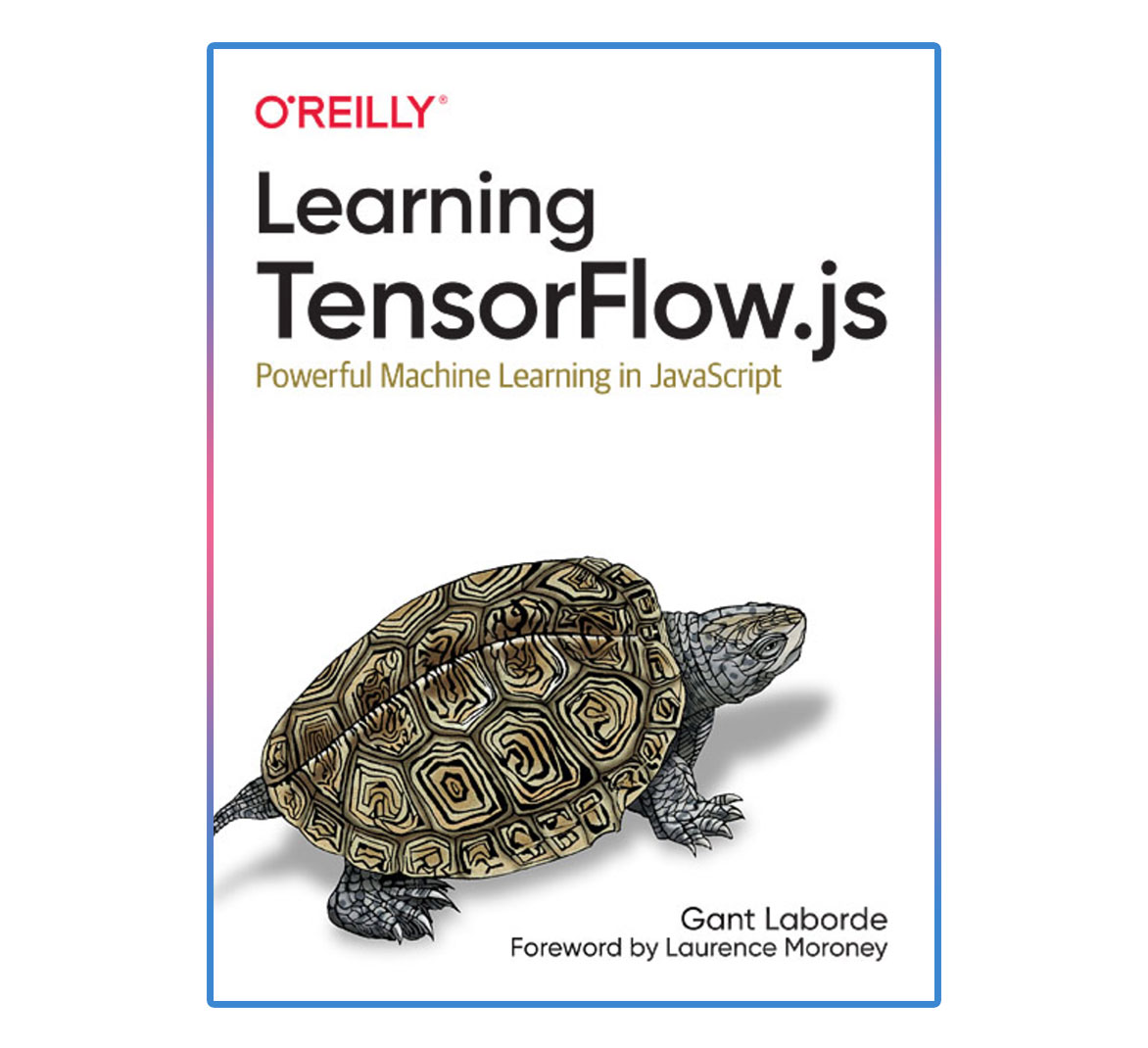Learning TensorFlow.js - Powerful Machine Learning in JavaScript by Gant Laborde
Learn how to take advantage of the TensorFlow.js framework to implement machine learning models in the client browser or server.
- Web devs and Front end Engineers who are familiar with JavaScript but unfamiliar with how to get started in AI / ML.
- Experienced AI specialists who are interested in how to apply their server-based skills to a framework like TensorFlow.js.
Purchase your copy of the book on Amazon: https://amzn.to/3dR3vpY
The code in this repository is broken down by chapter. Each chapter folder has a technical domain split. Some code is repeated in each folder for each technology.
The folders in each chapter could be:
extra- any extra content for that chapter that is not technically specific.node- A Node.js set of solutions and code for the given chapter that run as a server.simple- A "inline" hosted set of HTML solutions in code for a given chapter that run in the browser. These files do not depend on a package management system for hosting. These files access their dependencies via CDNs.web- A Parcel.js web hosted solution of code that runs using NPM to create a browser based solution. These projects reflect modern transpiled web technology.
- Chapter 1 AI is Magic - There is no code associated with Chapter 1 because it's an introduction to the book and concepts. I've added a small readme with some of the links mentioned in the chapter for convenience.
- Chapter 2 Introducing TensorFlow.js - This chapter is focused on getting you running TensorFlow.js on a client or a server. Once you've got it running, you actually run a Toxicity classifier on given text.
- Chapter 3 Introducing Tensors - This chapter helps you understand the concept and need of tensors. You then immediately use this technology to build a simple recommendation system for music.
- Chapter 4 Image Tensors - Images in machine learning are a fantastic example of tensors and all the things you can do to modify complex data.
- Chapter 5 Introducing Models - Learn what makes an AI tick. Machine learning models are the core of what drives machine learning. In this chapter, you implement several models.
- Chapter 6 Advanced Models & UI - In this chapter, you implement a very advanced model that detects objects, you then do an overlay that helps illustrate the results, and you connect everything to the webcam for real-time inference.
- Chapter 7 Model Making Resources - Now that you understand how to implement models, where do they come from? This chapter gives you a tour of conversion commands and data resources.
- Chapter 8 Training Models - Train your first model from data. See the simplest model architecture for the simplest problem. You train directly in the browser!
- Chapter 9 Classification Models & Data Analysis - Data isn't always clean. Learn how to build a notebook, visualize, and extract features from your data by solving who would survive the Titanic.
- Chapter 10 Image Training - Bring in some advanced concepts for feature extraction via convolutions. Understand and learn how to build more advanced models on Node.js and implement those models in the browser.
- Chapter 11 Transfer Learning - Learn what transfer learning is and utilize it. Transfer learn with several methods and see the benefit with small datasets.
- Chapter 12 Dicify - Capstone Project - Utilize all the skills you've learned. Compose a dataset and train a model to create art out of dice.
